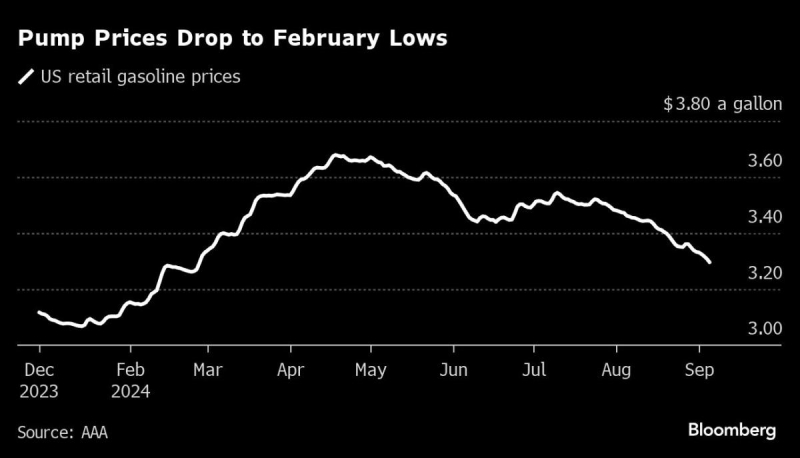
In mid-March 2023, Swiss bank UBS Group AG (UBS) bought rival Credit Suisse Group AG for 3 billion CHF (about $3.3 billion USD), a move intended to shore up the global banking system and prevent the latter financial institution from collapsing.
Credit Suisse, one of Switzerland’s leading financial institutions since its predecessor Schweizerische Kreditanstalt was founded in 1856, was among a group of 30 banks known as globally systematically important, and a full collapse might have devastated the global financial system.
Below, we explore what happened with the Credit Suisse crisis and the impact of the bank’s collapse.
Key Takeaways
- Credit Suisse, the second-largest bank in Switzerland, collapsed in March 2023 and was bought by rival UBS for 3 billion CHF (about $3.3 billion USD).
- Credit Suisse faced numerous scandals in recent years, including a spying scandal, the collapse of two investment funds in which the bank was heavily involved, and a rotating group of executives.
- Immediately prior to Credit Suisse’s collapse, two U.S. banks—Silicon Valley Bank and Signature Bank—also collapsed, sending shock waves through the global financial system.
- UBS plans to sell off parts of Credit Suisse in the coming months and years.
- The impact on Switzerland’s reputation as a global banking hub and a stable financial center may be significant.
About Credit Suisse
As of the end of 2021, Credit Suisse had assets under management (AUM) of 1.6 trillion CHF (about $1.75 trillion), making it the second-largest bank in Switzerland after UBS. At that time, Credit Suisse employed more than 50,000 people. Note that as of year-end 2022, Credit Suisse’s AUM had dropped to about 1.3 trillion CHF (about $1.4 trillion).
Beginning in 2023, Credit Suisse was organized into five divisions: Wealth Management, Swiss Bank, Asset Management, Investment Bank, and Capital Release Unit. At the time of its purchase by UBS, Credit Suisse had about 150 offices in roughly 50 countries around the world.
What Caused the Collapse of Credit Suisse?
Despite its long history, Credit Suisse was plagued by a series of scandals, management shifts, and significant losses in recent years.
In February 2020, Credit Suisse’s then-CEO, Tidjane Thiam, resigned after a 2019 spying scandal. Credit Suisse’s wealth management boss, Iqbal Khan, left for UBS and was subsequently surveilled by private contractors in an effort to determine whether he poached clients.
In 2021, amid the pandemic, the collapse of the U.S. family investment fund Archegos Capital and British finance firm Greensill Capital triggered a pretax loss of close to $1 billion for Credit Suisse. Following the collapse of Archegos, Credit Suisse’s investment bank CEO and chief risk and compliance officer left the company. An independent investigation of Credit Suisse’s role in the Archegos scandal found that the bank had failed to “effectively manage risk,” but suggested that no fraudulent or illegal conduct occurred.
Months later, in January 2022, Chairman Antonio Horta-Osorio resigned from the bank’s board after about nine months in the position over a scandal related to his breaching of Swiss and British COVID-19 quarantine protocols.
By late summer 2022, new CEO Ulrich Koerner unveiled a strategic review that was hindered by an unsubstantiated rumor that Credit Suisse was facing an impending failure. This prompted clients to pull 110 billion CHF (about $119 billion) of funds in the final quarter of 2022.
Facing a stock that shed about three-quarters of its value in a year, Credit Suisse announced plans in early 2023 to borrow up to $54 billion to shore up liquidity and boost investor confidence. However, by mid-March, the bank’s top backer, Saudi National Bank, said it would not give more money to Credit Suisse as a result of regulatory barriers.
One of the final developments prior to UBS’ purchase of Credit Suisse was the collapse of U.S. banks Silicon Valley Bank and Signature Bank in early March 2023. They prompted the U.S. government to make sweeping promises to depositors that money would be available but nevertheless sent fear throughout the global banking system.
Timeline of the Collapse
In summary, the key events leading up to the collapse of Credit Suisse include:
- 2019 and early 2020: Credit Suisse faces a spying scandal regarding an outgoing wealth management executive; then-CEO Tidjane Thiam resigns.
- 2021: Archegos Capital and Greensill Capital collapse, leading to $1 billion in losses for Credit Suisse and another management shake-up.
- Jan. 2022: Chairman Antonio Horta-Osorio resigns from the company following news that he broke COVID-19 quarantine regulations.
- July and Aug. 2022: Rumor circulates that Credit Suisse faces impending failure, prompting clients to pull about $119 billion in funds in the last quarter of the year.
- March 2023: Credit Suisse says it will borrow up to $54 billion from the Swiss National Bank.
- March 2023: U.S. institutions Silicon Valley Bank and Signature Bank fail, setting the global financial system on edge.
- March 2023: Switzerland’s regulatory authorities allowed the takeover of Credit Suisse by UBS without the shareholder approval of either entity.
Impact of the Collapse
The impact of UBS’ takeover of Credit Suisse is wide-ranging. For the bank’s offices around the world and its 50,000 employees, the future remains uncertain, as UBS could absorb some or all of them and shutter or lay off others. UBS is expected to have roughly $5 trillion in AUM following the deal.
The global financial system responded with measures to attempt to stabilize banks. Central banks moved to coordinate daily access to a lending facility for banks seeking to borrow U.S. dollars in the immediate aftermath of the takeover. Switzerland’s government is particularly impacted, as it has agreed to provide 100 billion CHF ($108.4 billion) to ensure the deal is completed. For investors, about 16 billion CHF (more than $17 billion) in Credit Suisse’s contingent convertible bonds are wiped out as part of the takeover.
The collapse of Credit Suisse could also impact Switzerland’s reputation as a stable, strong country for banking. The loss of one of the country’s oldest financial institutions, the bank that bankrolled the construction of Switzerland’s railways, could leave Swiss citizens in and out of the banking industry devastated.
Acquisition of Credit Suisse by UBS
UBS’ purchase of Credit Suisse was orchestrated and approved by regulators. The price tag of more than $3 billion for the deal is modest compared with the size of the bank and its assets. UBS officials also said immediately following news of the purchase that they planned to reduce the size of Credit Suisse in the coming years, potentially by selling off parts of the bank, although details remain scarce.
Bailout vs. Merger vs. Takeover
Several related terms may be used to describe situations like Credit Suisse’s, including bailout, merger, and takeover, but there are key distinctions:
- A bailout is when an individual, business, or organization provides capital or other resources to a failing company to prevent it from collapsing.
- A merger is a type of agreement that unites two companies into one, often with one company that is struggling subsumed by the other.
- A takeover is when a company successfully bids to take over another, gaining control of its assets.
Officially, the UBS/Credit Suisse deal is a merger.
What Will Happen to Credit Suisse Stock?
Per the agreement, Credit Suisse shareholders will receive one UBS share for every 22.48 Credit Suisse shares held. Credit Suisse stock will be delisted by the time the deal is completed, likely by the end of 2023.
Which Is Bigger, UBS or Credit Suisse?
By assets under management (AUM), UBS is the largest bank in Switzerland, and Credit Suisse was the second-largest.
How Much Will UBS Pay for Credit Suisse?
UBS’ bid to assume control of Credit Suisse was 3 billion CHF, or roughly $3.3 billion.
How Is Saudi Arabia Involved in the Collapse of Credit Suisse?
Saudi Arabia’s Saudi National Bank invested about $1.4 billion for a 10% stake in Credit Suisse in late 2022, making it Credit Suisse’s largest shareholder.
How Is the Collapse of Credit Suisse Related to the Silicon Valley Bank Collapse?
The specifics of the collapses of Credit Suisse and Silicon Valley Bank are different. However, the collapses of Silicon Valley Bank and Signature Bank in close succession in the United States did frighten regulators and investors worldwide and led to U.S. government measures to stabilize the global financial system.
The Bottom Line
Following several years of scandals, Switzerland’s Credit Suisse bank collapsed in March 2023. It was purchased by Swiss rival UBS for about $3.3 billion in a deal approved by Swiss regulators without shareholder approval. UBS plans to sell off and downsize parts of Credit Suisse in the process.
Following the completion of the merger, Switzerland will have only one major financial institution and the country’s reputation for banking stability may have been shaken.
Correction—April 26, 2023: A previous version of this article misstated that Credit Suisse announced that it would borrow $54 billion in January 2023. It was announced in March 2023.
Article Sources Investopedia requires writers to use primary sources to support their work. These include white papers, government data, original reporting, and interviews with industry experts. We also reference original research from other reputable publishers where appropriate. You can learn more about the standards we follow in producing accurate, unbiased content in our editorial policy.
-
Bloomberg. “UBS to Buy Credit Suisse in $3.3 Billion Deal to End Crisis.”
-
UBS. “UBS to Acquire Credit Suisse.”
-
Reuters. “What Happened at Credit Suisse and How Did It Reach Crisis Point?”
-
Credit Suisse Group. “Who We Are Page.”
-
S&P Global Market Intelligence. “The World’s 100 Largest Banks, 2022.”
-
Credit Suisse Group. “Our Company Page.”
-
Credit Suisse Group. “Annual Report 2022,” Page 1 (Page 2 of PDF). (Download required.)
-
Credit Suisse Group. “Annual Report 2022,” Page 12 (Page 14 of PDF). (Download required.)
-
Credit Suisse Group. “Locations Page.”
-
CNBC. “Tidjane Thiam Quits as Credit Suisse CEO Following Spying Scandal.”
-
CNBC. “Investors Look for Answers from Credit Suisse Earnings After Archegos and Greensill Sagas.”
-
Credit Suisse Group. “Credit Suisse Group Publishes the Report of the Independent External Investigation into Archegos Capital Management.”
-
Reuters. “Credit Suisse Chairman Horta-Osorio Resigns Over COVID-19 Breaches.”
-
Board of Governors of the Federal Reserve System. “March 12, 2023: Joint Statement by Treasury, Federal Reserve, and FDIC.”
-
Credit Suisse Group. “Credit Suisse and UBS to Merge.”
-
Financial Times. “‘Credit Suisse Is Part of Our History’: Shocked Nation Digests Bank’s Collapse.”
-
Reuters. “Saudi Is Far from the Last Western Bank Bagholder.”
Open a New Bank Account Advertiser Disclosure × The offers that appear in this table are from partnerships from which Investopedia receives compensation. This compensation may impact how and where listings appear. Investopedia does not include all offers available in the marketplace.







